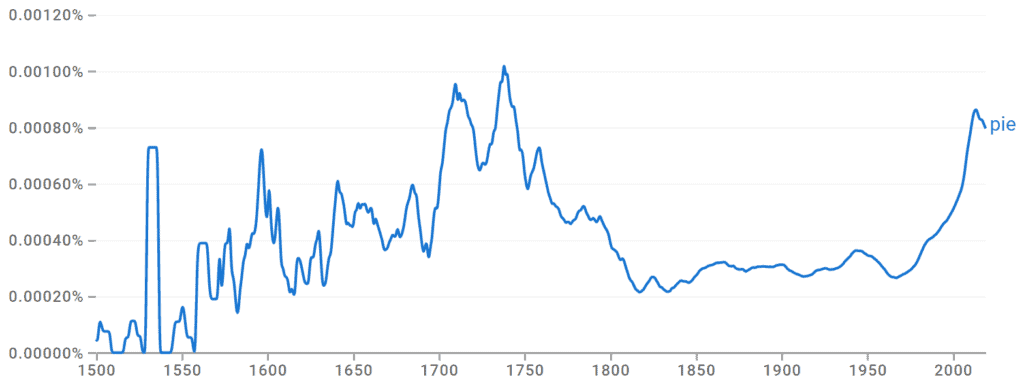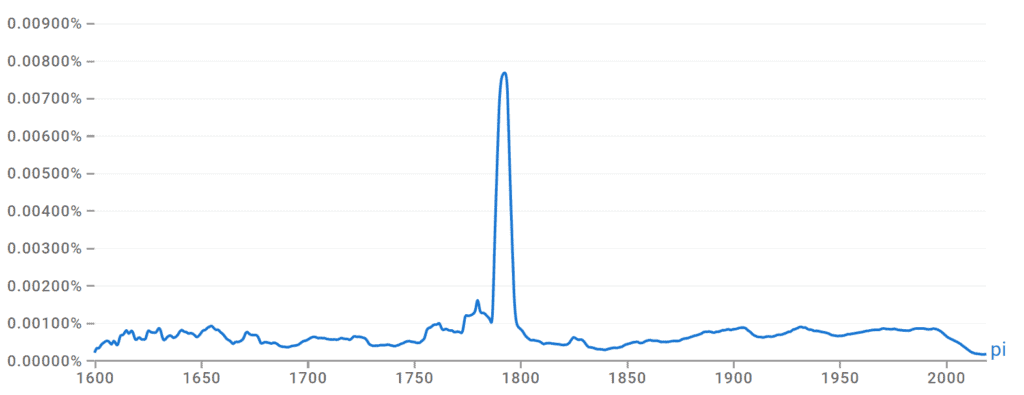Words that sound the same but have different meanings and spelling confuse anyone new to the English language. In fact, they often trip up native English speakers and are commonly misused in my regular and advanced English classes.
These types of words are called homophones. Pi and pie is an example that often creates a lot of confusion due to only having one letter difference between the two words. Knowing the difference between the two words is important in order to create clarity and precision in your writing.
Let’s take a closer look at how pi and pie are defined and how you can use them correctly.
What’s the Difference Between Pi and Pie?

In math, Pi is a letter in the Greek alphabet and is used to designate the irrational number pi or 3.14 to infinite. Pie is a rounded pastry shell filled with various meats, vegetables, or fruits and is served as part of a meal or as a dessert.
The two words are commonly confused due to their phonetic similarities and related spellings. This familiarity with one another makes them homophones.
What Is a Homophone?
Homophones are pairs or series of words that sound the same but have different spellings and meanings. There are many examples in the English language, but not many are as closely spelled as pie and pi.
How to Define and Use Pie
Pie is the name of a baked pastry that may be filled with fruit, vegetables, or meat. Pie may be sweet or savory.
For example:
- If it isn’t an inconvenience, would you run by the store and pick up an apple pie for dessert?
- The small minced meat pies were the perfect appetizer before the rest of the meal.
- I prefer pie over the cake when it comes to sweets.
Origin of Pie

Piehus is a late 12th-century word meaning “bakery” from which the Medieval Latin pie, or meal of meat or fish enclosed in pastry, arose in the 1300s within England. Pia, meaning pie or pastry, was also in use at this time.
The word is unfamiliar outside of the English language, and early ingredients were all considered savory, as fruit pies did not begin to appear until the 1600s.
Pie has also been used to mean something easy since the late 19th century, as in “easy as pie.” Other figurative uses include pie-eyed (1904), meaning drunk, and slice of the pie, meaning the sharing of something (1960s).
How to Define and Use Pi
Pronounced pi, π is the Greek letter that corresponds to the letter sound p and is the sixteenth letter of the Greek alphabet. In mathematics, pi is also used to designate the ratio of a circumference of a circle to its diameter, rendered as 3.141. Pi is an irrational number, which means the number of digits in the expression pi is infinite.
For example:
- The Theta Lambda Pi fraternity held its annual animal shelter fundraiser last week.
- The 5th-grade class held a competition to see who could memorize the most digits of pi.
Origin of Pi

The Greek letter π is from the Phoenician and means “little mouth.” It was adapted for the mathematical number in 1706 by William Jones as an abbreviation of the Greek word for periphery, which begins with the letter π.
This constant is also known as Archimedes’ Constant due to his approximation of the number in the 3rd century.
Let’s Review
Pi and Pie are two very different words despite their exact pronunciation. Pi is the word that represents the Greek letter π, which is most popularly known as a representation of the ratio of a circumference of a circle to its diameter.
Pie is a flaky, crusty pastry that is filled with savory or sweet fillings.
